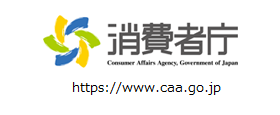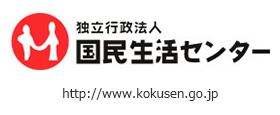The Guidelines related to "Conduct making Customer Offer a Contract against his/her Will" in Internet Mail Order
Article 14, paragraph (1), item (ii) of the Specified Commercial Transactions Act specifies that, if sellers or service providers have engaged in conduct "which is specified by ordinance of the competent ministry as the conduct through which the relevant person sought to cause a customer to offer a sales contract or service contract against the customer's will" and the competent minister finds that the conduct is likely to prejudice the fairness of a transaction and the interests of the purchaser, the competent minister may give instructions to the sellers or the service providers.
Based on this provision, the specific contents of "the conduct through which the relevant person sought to cause a customer to offer a contract against the customer's will" are specified in Article 16, paragraph (1) of the ordinance, of which item (i) and (ii) are provisions for Internet Mail Order (conduct that falls under either item (i) or item (ii) are subject to instruction), and item (iii) is a provision for offer by postcard.
[Provisions of Article 16, paragraph (1) of the ordinance]
- (i)When receiving an application for an electronic contract (which means a sales contract or a service contract concluded between the seller or the service provider and the customer by a method with an electronic data processing system or other information and communications technology through computer screens, for which an offer is made when the customer sends the application from the computer used in accordance with the procedure that is displayed on the screen by the seller, the service provider, or a person entrusted by the seller or the service provider; the same shall apply in this item and the following item), the seller or the service provider fails to indicate that the computer operations pertaining to the electronic contract (limited to those that constitute an offer for said electronic contract; the same shall apply in the following item) will constitute an offer for said electronic contract, in a manner easily recognizable by the customer when conducting said operations.
- (ii)When receiving an application for an electronic contract, the seller or the service provider fails to allow the customer to easily confirm and correct the details of the offer when conducting the computer operations pertaining to the electronic contract.
Item (i) (indication that it leads to an offer)
(1) Item (i) provides for cases where a button is not indicated in a manner that enables consumers to easily recognize that clicking on the button leads to a chargeable offer in Internet Mail Order.
(2) The following cases are generally considered not to fall under the conduct specified in item (i).
- A. Cases where a screen with a title like "Confirmation of order contents" (a so-called final confirmation screen) is always displayed in the final stage of an offer, and the offer is not made until a button with an indication like "Order these contents" is clicked(Reference:Screen example 1)
- B. Cases where it is clearly indicated that the operation is for finalizing the offer, by taking the following measures even if there is no so-called final confirmation screen
(Reference:Screen example 2)
- (a) "I will purchase (order, make an offer for) the above goods" is indicated as the text on a button for finalizing the offer.
- イ(b) There is a display of "Will you purchase (order, make an offer for) it?" near the button for finalizing the offer and "Yes" is indicated as the text of the button.
(3) The following cases may fall under the conduct specified in item (i).
- A.Cases where a term such as "Send" instead of "Purchase (order, make an offer)" is indicated on the button for finalizing the offer, and there are no indications anywhere on the screen that clarify that the button is for "making an offer"(Reference:Screen example 3)
- B.Cases where there is a misleading indication that gives an erroneous impression that it is not a contract for value, such as the indication of "Gift" near the button for finalizing the offer
Item (ii) (Provision of opportunities for confirmation and correction)
Item (ii) provides for cases where measures are not taken so as to enable consumers to easily confirm and correct the details of the offer while making the offer in Internet Mail Order.
Cases where the following I and II are both met are generally considered not to fall under the conduct specified in item (ii) (Reference:Screen example 1、Screen example 4)
- I.The details of the offer can be easily confirmed by taking any of the following measures in the final stage of an offer.
- A. Case where the details of the offer are displayed on the screen in the final stage of an offer
- B. Case where a button like "Confirm the order contents" is presented, and the details of the offer can be confirmed by clicking it even if the details themselves are not indicated on the screen in the final stage of an offer. Or cases where there is an explanation like "Please go back to the previous page using the back button of the browser if you want to confirm the details."
- II. The details of the offer can be easily corrected by taking any of the following measures after the details were confirmed during I.
- A.Cases where a button like "Modify" or "Cancel" is provided on the screen in the final stage of an offer, and the offer can be corrected by clicking on the button
- B.Cases where there is an explanation like "Please go back to the previous page using the back button of the browser if you want to make corrections" on the screen in the final stage of an offer
(3) The following cases may fall under the conduct specified in item (ii).
- A.Cases where the details of the offer are not indicated, and measures for confirming them (providing a button like "Confirm the order contents" or the explanation of "Please use the back button of the browser to go back to the previous page") are not provided on the screen in the final stage of an offer(Reference:Screen example 5)
- B.Cases where measures for correcting the contents (providing a button like "Modify" or the explanation of "Please use the back button of the browser to go back to the previous page") are not provided on the screen in the final stage of an offer(Reference:Screen example 5)
- C.Cases where the details of the offer are preset in a way that is not generally assumable, such as cases where a pre-setting is made so that an offeror will purchase more than one of the same good and the offeror will be led to make such offer without recognizing its details unless being very cautious(Reference:Screen example 6)



